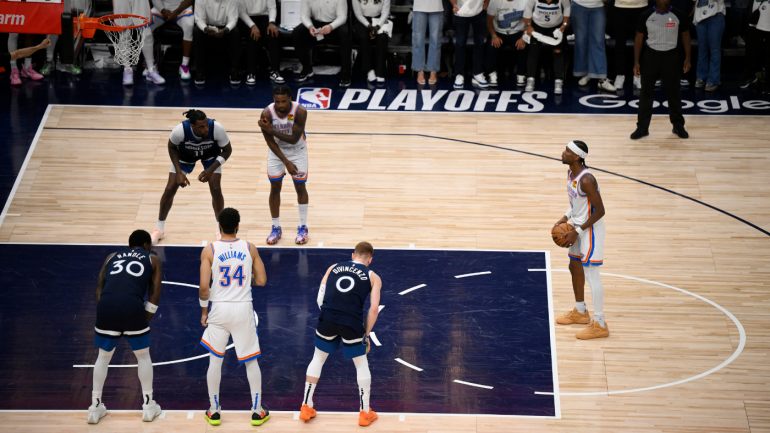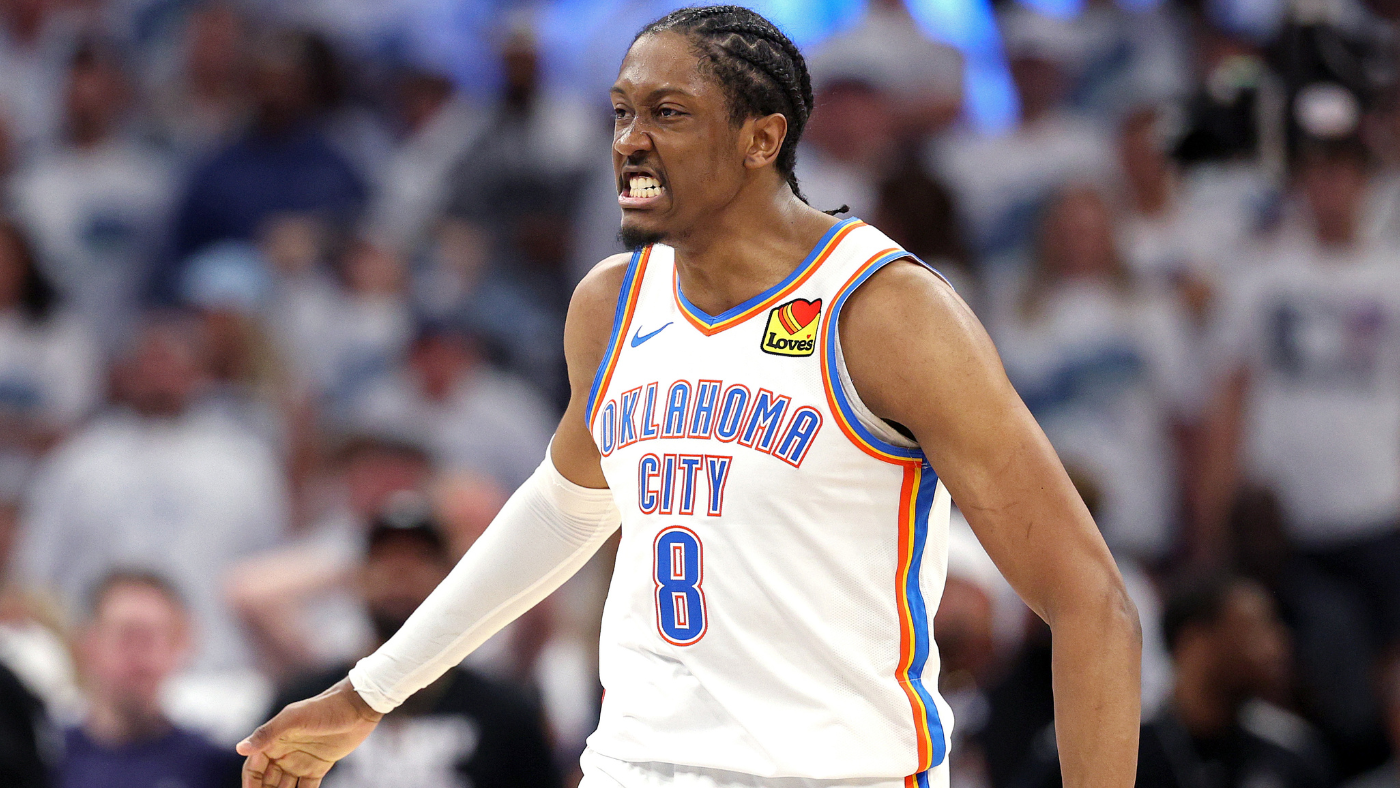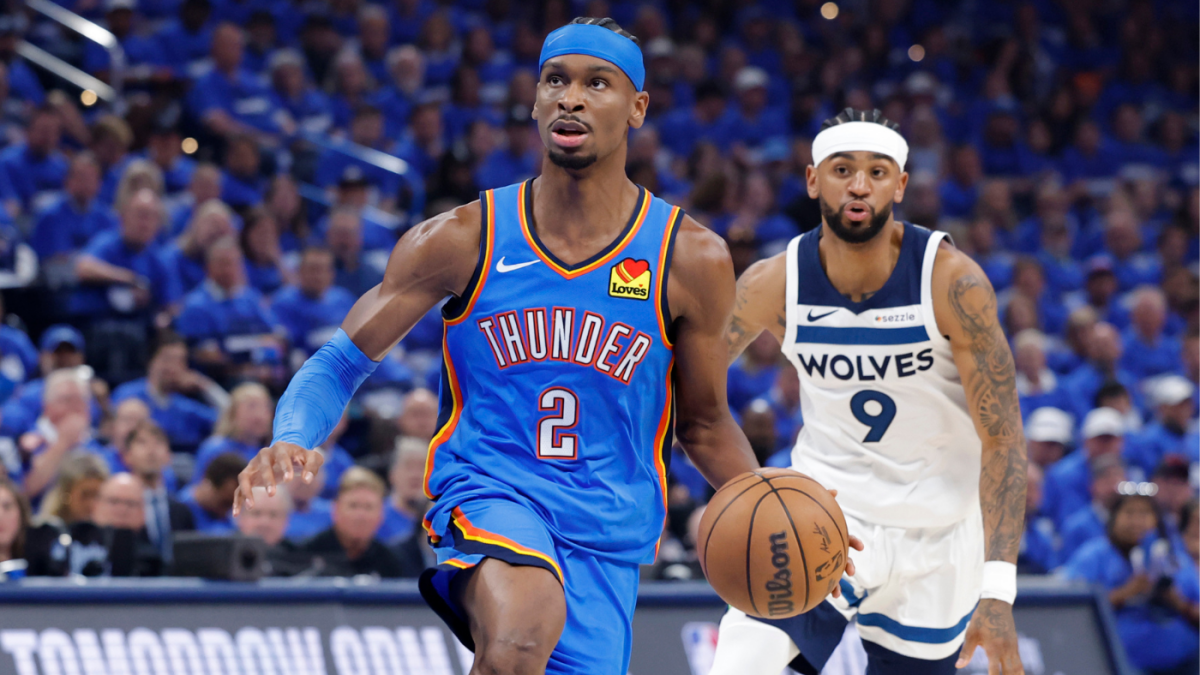
In 2019, then-Tennessee Titans coach Mike Vrabel exploited an obscure rule to help win a wild-card playoff game against the New England Patriots. Needing to punt with around six minutes remaining, Vrabel instructed his players to intentionally commit a delay of game penalty and follow it up with an intentional false start. This allowed the clock to keep running all the way down to the five-minute mark, leaving New England less time to operate with on offense after the punt.
While not technically illegal at the time, this strategy certainly violated the spirit of the rules. Penalties were created to enforce fair play, not to generate strategic loopholes. So the NFL acted swiftly to correct the situation. A year later, all offensive penalties resulted in a stopped clock.
It took the NFL one year to prevent its teams from exploiting this particular case of intentional rule-breaking. The NBA has suffered through its own version of it for practically its entire existence. When a team is losing at the end of a close game, it intentionally fouls its opponent to stop the clock and hope for misses. This strategy, when executed properly, grinds the game to a halt. Seconds of game time drag on for several real-time minutes. The teams are no longer playing basketball. They are competing in a free-throw contest.
This was bad enough when only the losing team was doing it, but lately, the leading team has started intentionally fouling as well. This happened Monday night, in Game 4 of the Western Conference finals between the Oklahoma City Thunder and Minnesota Timberwolves. The Thunder led by three and prevented Minnesota from getting up a potential game-tying shot twice. The final 14.1 seconds of game time featured 10 total free throws (the Thunder did hold on for a 128-126 win).
Fans were predictably upset with this development. One of the most exciting games of the postseason deserves a similarly thrilling conclusion, not a dull foul-fest, and the problem here runs far deeper than Game 4 showed. This is not just a “fouling up three” issue. Last season, on an episode of “Mind the Game,” LeBron James and JJ Redick extolled the virtues of fouling up six in order to prevent a 3-pointer that would make it a one-possession game.
Let’s take this to its logical conclusion, once the analytics community has successfully drilled these concepts into the skulls of their coaches. Remember the incredibly thrilling ending of Game 1 of the Eastern Conference finals between the Knicks and the Pacers? The Knicks led that game by 14 with a bit more than three minutes remaining on the clock. Aaron Nesmith proceeded to make five 3-pointers between the 3:14 and 0:22 mark of the fourth quarter. What happens when a team realizes that, with such a big lead, fouling to prevent 3s might be the optimal strategy? How far are teams willing to take this?

We don’t know, and that’s a scary place for the league to be considering what type of business it’s in. We think of professional basketball as a strategic product. The goal is to win and only win. At the team level, that might be true. It isn’t at the league level. This is an entertainment business, and very, very few fans would argue that intentional fouling leads to entertaining basketball. Teams can’t be blamed for acting in their own best interests. It’s up to the league to create an environment in which its business objectives and the competitive objectives of its teams correlate. Think of it like tanking: so long as an incentive structure that rewards losing exists, teams are going to lose games intentionally. That is why the NBA has taken steps to limit the benefits of intentionally losing. It’s just bad for business.
So, in the wake of the mess that was the end of Game 4 between the Timberwolves and Thunder, let’s rank some possible solutions to the intentional fouling epidemic. Now, this is going to be a tricky process. We want to limit intentional fouling as a whole, but we don’t want to kill comebacks. That makes building rules like this tricky. We can’t create different rules for teams that are winning vs. teams that are losing. That gives teams that are losing an unfair advantage.
Every rule we consider must affect both teams equally, and many of the concepts we cover here will apply to several solutions. A common theme, for example, will be allowing referees discretion to determine whether or not a foul was intentional. Almost all of them will refer only to the final two minutes of the game, as the drawbacks to intentionally hacking poor shooters in the middle of the game are significant enough that the problem has (mostly) solved itself. So, with that in mind, let’s dive into some possible fixes here.
6. Non-shooting fouls beyond the arc generate three free throws
The concept here is simple. Most intentional fouls take place immediately upon the inbound, depriving offenses of even the chance at a 3-pointer. If those same fouls created three free throws instead of two (only in the last two minutes), defenses would be forced to allow the offense to try to generate a 3-pointer.
This sounds great in theory. The danger is offenses trying to leverage this rule by flailing aimlessly into defenders and praying for three-shot whistles. If we aren’t applying rules selectively based on the score, this rule gives teams that are ahead a massive advantage. They’d just never take the ball inside of the arc if they were ahead in the closing seconds, yet defenses would still be so desperate to regain possession that they’d intentionally foul anyway.
Even on possessions in which the the team trailing by three does manage to get a 3-pointer up, it’s worth wondering what sort of defense it would be facing. Would the opponent even bother defending the paint? Probably not. This isn’t necessarily a defect, it just underlines the idea that we still wouldn’t be playing traditional basketball in the closing minutes. If our goal is to ensure that the end of games resembles the beginning, that’s a possible drawback here. Ultimately, this idea raises as many problems as it solves.
5. Allow fouled teams to choose free throws or a side out of bounds
Again, a very simple concept: teams could still intentionally foul, but the offensive team would have the option of just denying the free throws and trying to inbound the ball again. Strategically, this is an incredibly fun idea. It rewards coaches and teams that have a deep selection of creative inbound plays.
But think about what we’re trying to accomplish here. The goal is to make the game more entertaining. Does a series of inbound passes really sound all that fun? Probably not, right? Defenses could also successfully drain the final few seconds off of the clock with a few consecutive fouls if the game is close enough to its conclusion. It just trades one problem for another.
4. Introduce a double bonus
In college basketball, seven fouls puts a team in the bonus, but being in the bonus only offers a one-and-one set of free throws, not two outright. Once a team gets to 10 fouls, it’s in the double bonus. At that point, all non-shooting fouls generate two free throws. Obviously, the NBA starts with two free throws on non-shooting fouls in the bonus, but what if we tweaked the concept slightly here to suit our intentional fouling problem?
Here’s the pitch: the first non-shooting foul in the last two minutes when the fouled team is in the bonus generates only two free throws. The second and beyond generate three. This allows for some intentional fouling, but limits the scenarios in which a team does so several possessions in a row because doing so becomes more costly. The end of games would get faster, but the strategic element of intentional fouling would still be on the table for the highest-leverage possessions. This comes with the added benefit of incentivizing defenses to not commit unintentional fouls. You wouldn’t want to waste your first non-shooting foul in the bonus early if you knew it deprived you of a chance to intentionally foul for only two free throws later.
But, ultimately, this is a half-measure. Even if it limits intentional fouling, it wouldn’t eliminate it in the biggest moments. Sometimes it only takes one intentional foul to clinch a game. This is an interesting concept if preserving the strategic element of intentional fouling is a priority, but if the goal is to make the end of games more exciting, it would only really do so on a case-by-case basis.
3. Rearrange the rebounders
Part of the reason intentional fouling is so powerful is that the fouling team has an inherent advantage on the glass when the shooter misses. A study by 82games.com found that free throws have an offensive rebounding rate of 13.9%. Every other type of shot measured is at least 28.5%, making field-goal offensive rebounds more than twice as common as offensive rebounds on free throws. Every now and then, a player will successfully intentionally miss a free throw in such a way that allows his team to get the rebound, but this is rare.
Why are offensive rebounds so rare on free throws? Because the fouling team gets inside position on both blocks. The two rebounding positions closest to the basket go to the defending team, and the stoppages that follow intentional fouls allow them to put their two best rebounders on the floor for added security on the glass. Giving the defensive team the rebounding advantage on a standard free throw makes sense. We want to maintain the flow of the game: the offensive team gets its opportunity to score, and then the defensive team, usually, takes back possession.
But think about it in the context of an intentional foul. Game flow has disappeared out the window. The offensive team was denied its opportunity to score on the floor. So why exactly does the team that chose to violate the rules deserve an advantage on the glass? What if, on fouls that officials determined to be intentional, each team is granted inside rebounding position on one of the blocks?
This would at least give the shooting team a fighting chance at securing offensive rebounds on intentional fouls, and therefore make intentionally fouling a far more dangerous move. It would also add a layer of strategy to intentionally missing free throws. Suddenly, the ability to miss on a specific side of the rim becomes fairly valuable. Sure, the defense could plan to foul the offensive rebounder on the catch, especially since most offensive rebounders aren’t great free-throw shooters, but that creates the danger of an and-one putback.
This change wouldn’t eliminate intentional fouling entirely, but it would force teams to do it more selectively. Maybe fouling to prevent a Stephen Curry 3-pointer is worthwhile even with the offensive rebounding threat. This would allow the league to preserve the strategy to an extent, and it would put the onus on teams to be prepared for every scenario. However, it would probably require the most strenuous testing at the G-League level to suss out any unintended consequences.
2. Intentional fouls become technical fouls
This is the simplest idea we’ll cover. If an official determines that a foul is intentional, it becomes a technical foul. The offensive team gets one free throw and the ball. These would not be unsportsmanlike fouls, so they wouldn’t count towards possible ejections. In this way, an intentional foul would function much as a transition take foul does. It would give the offense one shot and the ball. The motivation for that rule change was similar to this one: the NBA did not want fouls slowing down fast breaks, the most exciting plays in the game, so they introduced transition take fouls to make the sport more entertaining.
That’s what we’re trying to do here, so applying that same system to intentional fouls addresses the problem. It would no longer behoove a team leading by three to foul because doing so, almost all of the time, would just trim the deficit to two. Perhaps defenses could selectively do this to poor free-throw shooters or in an effort to manipulate the clock, but the overwhelming majority of “foul up three” scenarios would vanish.
Of course, there’s a catch here. Unless we’re applying the rule selectively to teams that are ahead, this would also kill intentionally fouling as a mechanism for comebacks. It just wouldn’t be fair to apply a rule to one team but not the other, so introducing this change, while potentially helpful on one end, probably causes problems on the other. If we want to address the problem as a whole, we probably need a more extreme solution.
1. The Elam Ending
Distill intentional fouling down to its essence and it exists because of the clock. A team either doesn’t think it has enough time to win without fouling, or it fouls because it knows there is so little time left on the clock that doing so will likely lead to the end of the game before the opponent can do anything about it. The best way to limit intentional fouling is to remove the clock from the end of the game altogether. Thus, the Elam Ending.
For those unaware, the Elam Ending was invented by Nick Elam, a professor at Ball State University, and was first applied by The Basketball Tournament. The basic idea is that, rather than playing with a clock, teams play to a target score. The NBA used the Elam Ending in a handful of All-Star Games. Teams played with a standard clock for three quarters, and then, for the fourth, the clock was turned off and a target score was set. That target score was 24 points above the total that the leading team had after three quarters. The first team to reach that total would win the game.
The first use, in 2020, led to an all-time thriller that Team LeBron won 157-155 over Team Giannis. Subsequent uses were less successful, but that had more to do with disinterest from the players than a problem with the system. The NBA has since tinkered with the system in the G-League, both during its season and its Winter Showcase.
The benefits of the Elam Ending approach extend beyond the intentional fouling problem. A system without a clock ensures that every game concludes with a game-winning shot. Comebacks become far likelier when they are untimed. Teams could no longer pull starters out of blowouts as easily, forcing them to remain competitive until the final buzzer. Most of the problems that the game clock causes gets solved by the Elam Ending.
Are there drawbacks? Sure. Here are a few of them:
- Games can still end at the free-throw line even without intentional fouling. That famous 2020 All-Star Game ended with Anthony Davis at the line. One could argue that a free throw that can literally end the game is more dramatic than a standard, intentional foul attempt, but that is admittedly subjective. An interesting solution to this problem that has been proposed would be for possible game-ending free throws to subtract points from the opponent rather than add them to the shooter’s team’s total, which would guarantee that all games would end with a field goal attempt. This is likely too radical for casual fans, though, so it probably wouldn’t be feasible.
- While the Elam Ending would do away with most intentional fouling, there would be one specific situation in which it would still arguably be the optimal strategy. Let’s say the target score is 110 and the defensive team is leading 108-107. It might choose to foul to prevent a game-winning 3-point attempt knowing that it could win with a 2-pointer on the other end. Still, this is more exciting than typical intentional fouling because that team could be punished for taking that approach. If it doesn’t score on the other end, it will have given its opponent a chance to win with a 2-pointer that it didn’t previously have.
- Overtime would be eliminated by the Elam Ending. This isn’t a gameplay problem, it’s just worth pointing out since overtimes tend to be exciting. The G-League previously used a target score for overtime, but if there is one in regulation, there would never be a need for overtime.
- Without a clock, games could drag on practically forever. Think of how hard it is to score late in games. With a clock, we just chalk this phenomenon up to great defense and enjoy the stakes of it. Without a clock? We might see a lot of missed shots and some very long games. Now, there’s a bit of charm to this. Think of the fun of, say, a 15-inning baseball game. But there’s a possibility that longer games and exhausted players would lead to more injuries late. This would have to be studied further.
These are just the problems we know of now. Testing this system with NBA players would surely unearth more of them. This would be among the most drastic changes to the sport of basketball the NBA has ever enacted. Change scares people. It disconnects fans from the history of the sport and can often feel gimmicky.
Was the NBA’s adoption of the 3-point line in 1979 gimmicky? Probably. How about the introduction of the shot-clock in 1954? To an extent, sure. But these changes and countless others wound up creating the sport we love today. Basketball is not meant to be static. It is meant to grow and evolve with time. The thought of a target score might seem ridiculous today, but if it were instituted and succeeded, it could become just as vital as the 3-point line and the shot-clock did before it.

